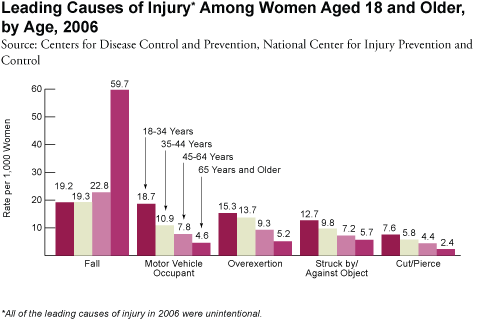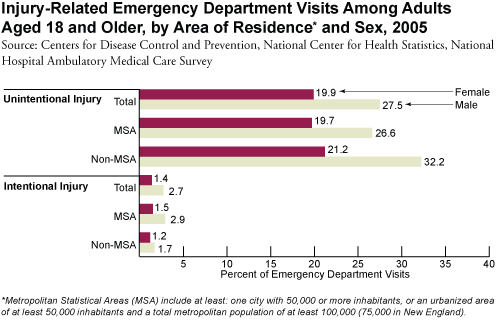When men are victims of domestic violence.
Four Sacramento County Sheriff's cars pulled up in front of David Woods's house. He tried to explain to them what happened. But the lead deputy cut him off: "Yeah, that's fine. Put your hands behind your back."
David said, "No, wait, she stabbed me ... there's the knife. See the knife? See my neck wound? See?"
"Put your hands behind your back. Turn around," the deputy replied.
"No," David protested. "She stabbed..."
The deputies drew their weapons. David's little daughters came running out of the back bedroom pleading, "Leave Daddy alone! Mamma tried to hurt him with a knife!"
One deputy, a woman, took the children in the bedroom and shut the door. David stood there, cuffed.
How the fight began
David's wife Ruth had taken the kids out for a walk in 39 degree weather -- for seven hours.
"By the time she got back their fingers were blue, their lips were blue, their ears were blue," David says. The children were soaked; she was soaked. We argued for an hour. "We had to put them in a warm bath to warm them up; they were hypothermic.
Then she started cutting up vegetables for dinner. She had a serrated vegetable knife with a blade about seven inches long. She turned around and she stabbed at me.
"I tried to block it, but I was surprised. I was off balance...the knife went right through my collar and gave me a little nick on my neck.
"She reared back to stab me again. I tried to block it again...I hit her in the mouth. She dropped the knife, ran to the telephone, called 911, and told them, 'My husband is hitting me! I think he's gonna kill me.'
"When she dropped the knife, I stood over it. I wouldn't let her hide the knife. I was going to say to the police, 'See? She tried to stab me.'"
The truth came from the kids
After 15 minutes, the female deputy returned from the bedroom after talking to David's children. She told the other deputies, "It's true. Both of the daughters saw it. She tried to stab him with the knife."
They took the cuffs off David. "Your wife obviously needs help," the lead deputy said. "She works for Kaiser, you've got health insurance that covers mental health, you need to call the emergency number and get her an appointment."
David says there's a double standard when it comes to charging men. "Now, isn't that strange? When she had a fat lip, it was a felony and I was going to jail. But when they finally realized that she tried to stab me in the neck, it stopped being a crime, and instead it was a mental health issue."
The history of their case
David Woods is a partially disabled former Marine who endured years of abuse at the hands of his wife Ruth and the law enforcement and domestic violence system which unwittingly enabled her.
Woods, a former construction worker, suffered disabling work-related injuries early in his marriage. He says:
"The violence really began in our family about 10 days after Ruth realized that she had all the power [financially]. I knew I had to get my kids out. I called the largest domestic violence shelter agency in Sacramento County several times. They told me, 'Men are perpetrators of domestic violence; women are victims of domestic violence,' and hung up.
"I had no way out. I had no money. Whenever we bought a car, Ruth insisted that the car be in her name only, so that if I took it and went to the movies without her approval she would call the police, and report, 'I'm estranged from my husband, and he stole my car.' She did that several times."
Worst of all is what David's children endured. One daughter says, "No one would help. Teachers, parents of friends, anyone I tried to talk to about what was going on at home told me I didn't understand, that my mother couldn't possibly be the violent party. When the police came to our home, they would always be ready to arrest my father, sometimes putting handcuffs on him. It was up to me to scream as loud as possible that it was my mom and not my dad, so they wouldn't take him away and leave me alone with her."
Domestic violence committed by women against men is generally ignored or minimized, yet more than 200 studies have found that women initiate at least as much domestic violence (DV) against their male partners as males initiate against their female partners. Research shows that men comprise about a third of DV injuries and deaths. Women often compensate for their lack of physical strength by employing weapons and the element of surprise -- just as David Woods' wife did, and just as recently murdered former NFL star Steve McNair's girlfriend allegedly did.
But in 2008, David Woods was partially vindicated. He was the principal plaintiff in a successful lawsuit against the State of California. The Third District Court of Appeals ruled that it violates equal protection that California's funding of domestic violence programs that offer services only to women but not to men.
Recent research on domestic violence
The most recent large-scale study of DV was conducted by Center for Disease Control and Prevention researchers and published in the American Journal of Public Health. The study, which surveyed 11,000 men and women, found that according to both men's and women's accounts, 50 percent of the violence in their relationships was reciprocal (involving both parties). In those cases, the women were more likely to have been the first to strike. Moreover, when the violence was one-sided, both women and men said that women were the perpetrators about 70 percent of the time.
The Obama administration recently appointed Lynn Rosenthal as the first-ever White House Advisor on Violence Against Women. Vice President Biden, who wrote the Violence Against Women Act, said that creating the post will help the White House focus on stopping domestic violence.
Many of the world's leading authorities on domestic violence recently gathered at the "From Ideology to Inclusion 2009" conference in Los Angeles and detailed new research contradicting this view and offering solutions that will benefit all. Researchers emphasized their findings that ignoring female-perpetrated DV puts children, men, and also women in harm's way. The conference was presented by the California Alliance for Families & Children and co-sponsored by the Family Violence Treatment & Education Association.
DV researcher Deborah Capaldi, Ph.D., a social scientist at the Oregon Social Learning Center, told the conference that the most dangerous DV scenario for women is that of reciprocal violence, particularly if that violence is initiated by women. The best way for many women to be safe is to not initiate violence against their male partners. "The question of initiation of violence is a crucial one ... much DV is [reciprocated], and initiations -- even that seem minor -- may lead to escalation," she explained.
Dr. Capaldi's research shows that whereas men are often thought of as the only abusers and also as serial abusers, a young woman's DV is just as predictive of her male partner's future DV as the man's own past DV.
While Rosenthal and numerous others have created many programs and services to help abused women, there are very few services available to abused men. Those who seek help often face hostility or indifference from domestic violence hotlines, service providers, and law enforcement.
Denise Hines, Ph.D., of Clark University in Worcester, Mass., has studied why many abused men hesitate to leave their female partners. Hines told the conference that while some of the men's reasons for not leaving were similar to those of abused women (love, not believing in divorce, hoping the partner will change, etc.), the men's overwhelming concern was for their children.
Men often don't want to leave their wives because this would leave their children unprotected in the hands of an abuser. If the men choose to take their children away from the home, when they're found, the children are likely to be taken away and given to the mother, and the men might be arrested for abducting their children. Moreover, they would possibly lose custody of their children in the divorce anyway, again leaving their children in harm's way.
In Hines's study of male victims of domestic violence, 64 percent of the men who called a DV hotline were told that they "only helped women," and over half were referred to programs for male perpetrators. Overall, only 8 percent of the men who called hotlines classified them as "very helpful," whereas 69 percent found them to be "not at all helpful." Worse, when an abused man called the police, the police were more likely to arrest him than to arrest his abusive female partner.
Children end up victimized
In any kind of spousal violence, children often end up being victimized. In the highly publicized Socorro Caro murder case, Socorro often abused her husband Xavier, a prominent Northridge, California rheumatologist, and once assaulted him so badly he had to have surgery to regain his sight in one eye. Trapped and not knowing what to do or where to go, Xavier endured the abuse, once telling his wife, according to reports, that "One day you are going to do something that cannot be undone." A short time later, Socorro shot and killed three of their four children. Their baby survived only because Socorro ran out of bullets. She was later convicted and sentenced to death for the murders.
According to John Hamel, LCSW, a court-certified batterers' treatment provider, even when the children themselves are not abused, "There is an overwhelming, irrefutable body of research indicating that children are adversely affected by witnessing inter-parental violence, regardless of the perpetrator's gender."
David's daughter gives her example:
"I grew up paranoid and feeling like the safety in my house was something only I was responsible for. If Mom became violent, it meant I failed. I learned the only way to survive was to watch every argument they had and be ready to interject myself as a distraction before violence happened.... My next task was to try to break it up: the screaming, threatening, pleading, whatever. I had to make sure no details escaped me, because if the cops got called they'd just believe my mom without question. It was my job to make sure the truth got heard."
Glenn Sacks, M.A., is the Executive Director of Fathers & Families. His columns have appeared in dozens of the largest newspapers in the United States. Ned Holstein, M.D., is the organization's Chairman of the Board. Their Web site is www.FathersandFamilies.org.
http://lifestyle.msn.com/your-life/bigger-picture/article.aspx?cp-documentid=20968901&page=0




No comments:
Post a Comment